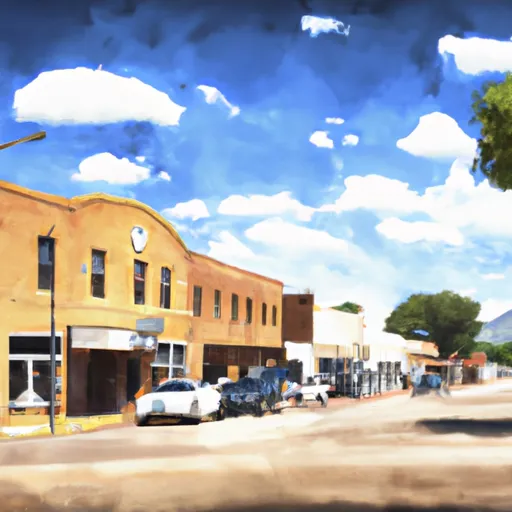-
 Snoflo Premium
Snoflo Premium
Get unlimited access to all our content
With no Ad interruptions! - Start Your Free Trial Login with existing account
Clarkdale
Eden Index
Climate
9.1
•
Recreation
7.5
•
Community
2.1
•
Safeguard
6.8/10

Clarkdale, Arizona is a small town located in Yavapai County with a population of just over 4,000 residents. The climate in Clarkdale is arid with hot summers and mild winters. The town is situated near the Verde River, which provides a vital source of hydrology constituents to the area. The river is also a popular spot for outdoor recreation, including fishing, kayaking, and hiking. The Tuzigoot National Monument is a must-see attraction as it features a preserved Sinagua Indian pueblo dating back to the 12th century. Additionally, the nearby Mingus Mountain offers opportunities for hiking, mountain biking, and camping. Overall, Clarkdale provides a great balance of outdoor recreation and historic preservation.
What is the Eden Index?
The Snoflo Eden Index serves as a comprehensive rating system for regions, evaluating their desirability through a holistic assessment of climate health, outdoor recreation opportunities, and natural disaster risk, acknowledging the profound impact of these factors on livability and well-being.
Climate Health Indicator (CHI): 9.1
Clarkdale receives approximately
332mm of rain per year,
with humidity levels near 64%
and air temperatures averaging around
17°C.
Clarkdale has a plant hardyness factor of
8, meaning
plants and agriculture in this region tend to thrive here all year round.
By considering the ideal temperature range, reliable water supplies, clean air, and stable seasonal rain or snowpacks, the Climate Health Indicator (CHI) underscores the significance of a healthy climate as the foundation for quality living.
A healthy climate is paramount for ensuring a high quality of life and livability in a region, fostering both physical well-being and environmental harmony. This can be characterized by ideal temperatures, reliable access to water supplies, clean air, and consistent seasonal rain or snowpacks.
Weather Forecast
Streamflow Conditions
Verde
Area Rivers
Verde
Snowpack Depths
Verde
Reservoir Storage Capacity
Verde
Groundwater Levels
Recreational Opportunity Index (ROI): 7.5
The Recreational Opportunity Index (ROI) recognizes the value of outdoor recreational options, such as parks, hiking trails, camping sites, and fishing spots, while acknowledging that climate plays a pivotal role in ensuring the comfort and consistency of these experiences.
Access to outdoor recreational opportunities, encompassing activities such as parks, hiking, camping, and fishing, is crucial for overall well-being, and the climate plays a pivotal role in enabling and enhancing these experiences, ensuring that individuals can engage in nature-based activities comfortably and consistently.
Camping Areas
| Campground | Campsites | Reservations | Toilets | Showers | Elevation |
|---|---|---|---|---|---|
| White Horse Lake | 94 | 6,592 ft | |||
| Kaibab Lake | 63 | 6,802 ft | |||
| Dead Horse Ranch State Park | 127 | 3,323 ft | |||
| Mingus Mountain | 25 | 7,645 ft | |||
| Powell Springs | 10 | 5,301 ft | |||
| Potato Patch | 24 | 6,956 ft | |||
| Dogtown Lake | 54 | 7,058 ft | |||
| Thousand Trails Rd Dispersed | None | 3,461 ft | |||
| Agua Fria National Monument Dispersed | None | 3,186 ft |
Catastrophe Safeguard Index (CSI):
The Catastrophe Safeguard Index (CSI) recognizes that natural disaster risk, encompassing floods, fires, hurricanes, and tornadoes, can drastically affect safety and the overall appeal of an area.
The level of natural disaster risk in a region significantly affects safety and the overall livability, with climate change amplifying these risks by potentially increasing the frequency and intensity of events like floods, fires, hurricanes, and tornadoes, thereby posing substantial challenges to community resilience and well-being.
Community Resilience Indicator (CRI): 2.1
The Community Resilience Indicator (CRI) recognizes that education, healthcare, and socioeconomics are crucial to the well-being of a region. The CRI acknowledges the profound impact of these elements on residents' overall quality of life. By evaluating educational resources, healthcare accessibility, and economic inclusivity, the index captures the essential aspects that contribute to a thriving community, fostering resident satisfaction, equity, and social cohesion.

